Cady McClain’s New Documentary About Women Directors: Seeing Is Believing
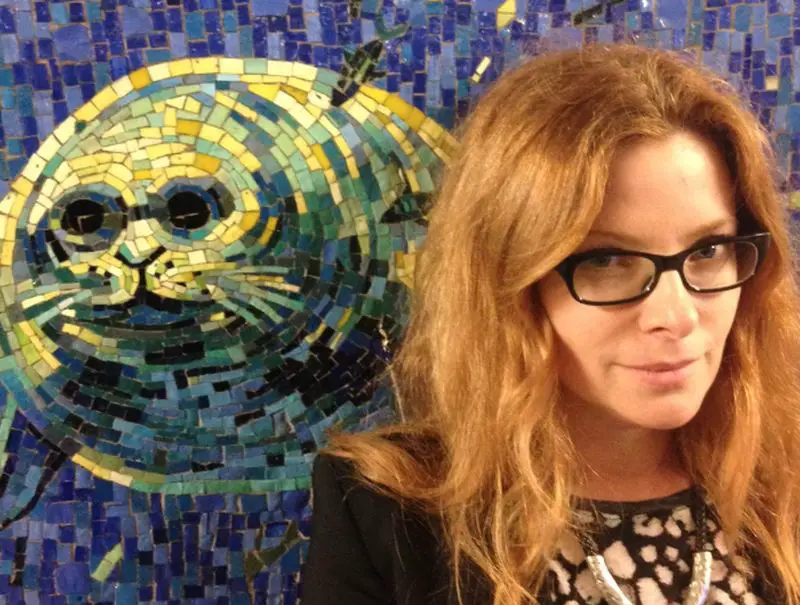
Heidi Honeycutt is the most important journalist in the world.
Cady McClain is an award-winning daytime TV actress, but she has another side: as a director. She has completed two short award-winning films, Flip Fantasia and World of Albert Fuh, and the comedy web series Suzy F*cking Homemaker, and is currently in production on a new documentary about women directors called Seeing Is Believing: Women Direct. The teaser is embedded below:
So far, McClain has shot intense, one-on-one interviews with directors Deborah del Prete (co-founder Odd Lot Entertainment), Deborah Kampmeier (Virgin, Hounddog, SPLit. Sundance Jury Prize Nominee), Leah Meyerhoff (I Believe in Unicorns, founder of Film Fatales), Meera Menon (Farah Goes Bang, Equity), Shana Betz (Free Ride, Black Belle), Nicole Gomez Fisher (Sleeping with the Fishes), Nikki Braendlin (As High as the Sky), and Sarah Kernochan (two time Oscar winner for Marjoe and Thoth), and she’s still interviewing more women directors. Seeing Is Believing is a part of the current and ongoing fight for equality for women directors, which includes all the new efforts to shed light on the lack of women directors in film and TV from organizations like Director’s Guild of America, the Center for the Study of Women in Television and Film (The Celluloid Ceiling Report), Etheria Film Night, The Female Filmmakers Initiative (co-founded by Sundance), Seeking Our Story, The Director List, Film Fatales, The Geena Davis Center for Studies on Gender in Media, the ACLU/EEOC case investigating discrimination against women in the film industry, and so many more.
Heidi Honeycutt: Why did you decide to focus your documentary on women directors, instead of women writers, for instance? What is it about being a director that you find fascinating?
Cady McClain: I can’t quite tell you that unless I tell you my whole story, so forgive me for the length of this:
I discovered the joy of directing when I was 22 at a workshop with Curt Dempster of EST (Ensemble Studio Theater) In Manhattan. It was life changing: the opportunity to craft every element, to own the whole vision for the piece… I was led to understand the purpose of a director and the history behind the craft… it was one of those moments where you discover your passion. However when I took my discovery to my mom and told her I wanted to quit acting and pursue a directing career, she sat me down and begged me not to. To be fair, she had cancer and I was her sole means of support thanks to my contract role on a soap opera. She didn’t believe that directing was something I could make a living at and her worst fear was us ending up broke. So I told her I’d let it go. But it really hurt to do that.
Her point of view, I now realize, was based on some rather unpleasant experiences she’d had as a woman. Her era was when, despite the hard efforts of the women’s movement, women were still considered “better in the bedroom than the boardroom.” You know, the classic “Mad Men” kind of prejudices we’d like to think that as a culture we’ve outgrown. Her fears and warnings about the world stayed with me until a couple of years ago when I simply couldn’t stand pretending to be someone I wasn’t anymore. I had to take the risk and make something that was really authentic and true to my vision of what storytelling and my place in the world could be.
So in 2013, I made two short films with a great professional crew and had the time of my life. I didn’t experience any prejudice or sexism, but these sets were very small, very “indie.” There was no sense that “big business” was at stake. We were all in it for the art. Not long after that wonderful experience I was offered a job acting again on a network daytime drama. Why I didn’t think, “Why don’t I just pursue directing now and make a living at that?” is a part of why I’m making this film. Let me tell you a little story:
As an professional actress (I’ve been doing this for almost 30 years and have two Emmy’s and a sh**load of other nice recognitions that assure me I don’t suck at what I do), I’ve experienced some really unpleasant sexism and objectification. Perhaps this isn’t shocking, but it should be. It’s been 20 years since my mother died, and earlier this year while I was on a set, I had a male director who I’ve known for 15 years say to me, “Nice pineapples! And I don’t mean your shirt.” (I was wearing a pineapple patterned shirt.) This wasn’t the first time I’d ever heard something like this, nor was it the last, but it stuck with me. I asked him, “How’s the wife?”
I’ve spent a fair amount of time since asking myself, “Why did he do what he did? Did he have a sense that I wouldn’t or couldn’t fight back? Did I say something that made him feel like he could suddenly talk to me in a way he never had before or was he just having a bad day at work?” What I’ve landed at is, “Does it matter why?”
As an actress, I’ve had to deal with harassment and inappropriate comments all my life, but I always thought that things would change with time. So I’ve learned to ignore it, to bear it, how to sling it back, and how to stand up for myself… but that doesn’t mean I like it, and nothing makes it right. Professionals don’t make a woman aware of her difference in gender, they treat her as a colleague. So the sad answer to “Why haven’t I pursued directing more?” is this: because I’ve worried that as a director some man might feel more deserving of my position and the attacks might get much, much worse.
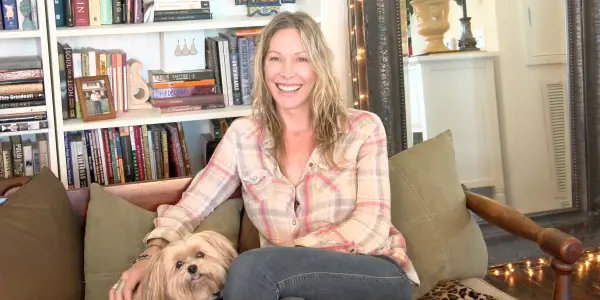
Still, I wanted to talk to women who had taken the risk and become directors despite the obstacles. I started to think about who I knew, and who were the really well known women directors out there. I started to realize I couldn’t name ten women directors in history, and it wasn’t because I’d become dependent on Google. I just hadn’t seen them in the main stream media like I had male directors. And when I went to the video store to specifically look for great films directed by women (yes, I still go to the video store), there were ten or more men to every woman in the “Top Directors” section. This just didn’t seem right.
I knew in my gut there had to be more women who directed than cinema history was currently recognizing, there simply had to be. I wondered, where they were, and why weren’t they being recognized like the DW Griffith or Elia Kazan? And why did it take so long for the Oscars to finally recognize a woman director?
So I decided to make a film on female directors for many reasons: 1) because I’ve been warned that I can’t make a living at it, despite the fact that many men do, so I shouldn’t even try. 2) Because as an actress I’ve only seen a handful of women directors on set and I’ve always wondered why there weren’t more, and 3) because I realized that if I needed community, if I needed to see and hear from women who direct, there were probably thousands of other women out there like me, who needed to hear them as well.
Then just as I began my project, all these statistics started to pour out into the mainstream media via the DGA, the Center for the Study of Women in Television and Film (The Celluloid Ceiling Report), The Female Filmmakers Initiative (cofounded by Sundance) and so many more. Now it seems like every day there’s another article, another report. I’ve realized I have really stepped into a bigger story than I’d anticipated.
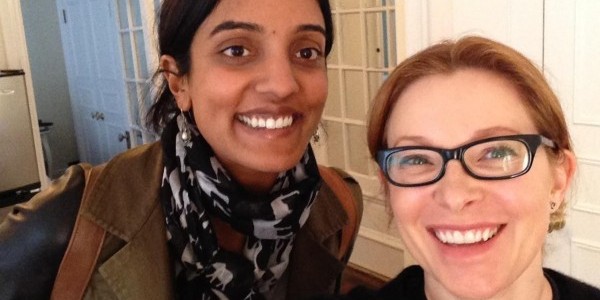
I then “discovered” Geena Davis’s Center for Studies on Gender in Media and her theory that little girls believe they can be what they see on TV. She’s really making a big difference for the next generations to come. I realized when I was a kid I saw either “girl nerd” or “girl bimbos.” And although I clung to my “Stan Lee’s Women Superheroes” comic book, and liked to pretend I was spiderman, I can’t recall seeing one woman director on TV, not until Penny Marshall directed “Big,” in 1988, did I see a woman standing behind a camera.
Then EEOC case went public and I almost fell over. I realized that these interviews were really important. These women needed to be SEEN. So this film took on a deeper purpose. And that’s why it’s called Seeing is Believing. And BTW: the NY Times just came out with this article. We are at a tipping point, and I’m thrilled to be a part of it with my film.
HH: Why must women directors persist “despite the odds”? And, while I know you don’t want to focus on the odds and the obstacles, what in your opinion are the biggest obstacles women directors face?
CM: Why must they persist? Because 1) there is some amazing art out there that the world is missing if the women who are called to direct stories don’t do it. 2) We as human beings are the stories we tell ourselves. If we don’t acknowledge the reality of 50% of the population, we are a culture in denial and that denial will only create disharmony and illness. 3) Women deserve to have their realities reflected back to them. We are not invisible. We are not adjuncts to men in a man’s world. We are whole and complete and deserve to be recognized as such. 4) Because we need women storytellers. They are essential to the well being of the world. Bias is the biggest obstacle women directors have to face. Bias against them based on their gender. And that bias comes from fear, a fear that “the other” is going to take what you have.
HH: You talk about directors having a deeper purpose. What do you mean by that?
CM: I believe there is a certain type of person who is drawn to storytelling. The really good ones have a gift, an insight into human nature. The best ones have a vision that takes the audience on a journey that can actually change the progress of their life. Haven’t you ever walked into a movie one way and walked out thinking about the world completely differently? That’s what great storytellers do. They enlighten us. Of course writers, directors, actors, producers all are essential in the creation and telling of a story … but the person who has to guide the vision is the director. And usually the director is guided by something. And I believe that something is a sense of purpose, an understanding why the story must be told, and told in a certain way.
HH: How will you explore each director’s femininity in these interviews? Is it in them as a person, or the subject matter of their films, or both? How do you define femininity, and how is it limiting as a director? How is it empowering?
CM: At it’s most core level, I think it’s up to the individual to deal with the word, just like men have to deal with “masculinity” and what it means to be a “man.” But in my opinion, all relations to both words have a lot to do with heavy cultural pressure, on where you’re from, and well as your unique make up.
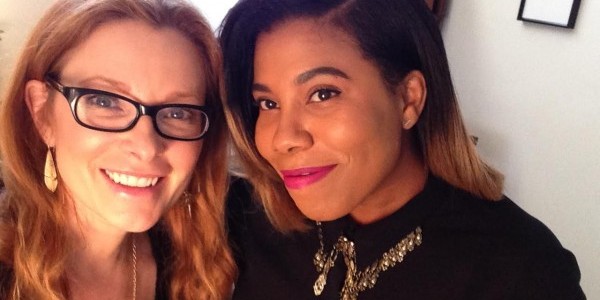
That said, I can’t deny that there is something behind the idea of women having a unique perspective because of their gender, but not for the usual reasons of them having a “female gaze.” I think it’s because they have to deal with the reality of their being a woman having been culturally associated with the idea of “femininity.” “Femininity” is a word that has many cultural applications, historically. Coming from a very 1950’s style mother, “femininity” meant “passive” or “submissive in a charming way.” (Doesn’t that just make you wanna ralph?) To other women it might mean “sexual,” and to others it might mean, “powerful.” But generally, the word “feminine” tends to be associated with words like “soft,” or “pliable.”
In Asian cultures, feminine energy (yin) is actually the balance of male energy (yang) and exists in both genders. I’m no scholar in this matter but I am aware that Yin isn’t just “light” while Yang is “dark.” Yin can mean “intuitive,” “substantial,” “growing,” “producing form,” “darkness,” “density,” etc… Just like there is so much more to the Asian “Yin/Yang” system of identifying energies, it is my experience that there is so much more to the “female” side of each person, whether they are a man or a woman. The “feminine” side can be the place where we are still, letting the unconscious part of our mind proffer forth creative options or images. It can be the place from which we cultivate friendships, relationships, deeper understandings between each other. It can also be a place of inaction, like moldy, dank water that it turns our hearts into thoughts of apathy and death.
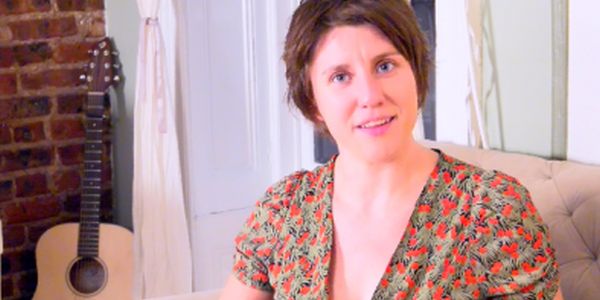
All this to say: just because these filmmakers are of the female gender doesn’t mean that the stories they tell are “soft and flowery,” or about “love and romance.” Not in the least. These artists are digging into aspects of the female gender that, when I see and hear them revealed, make me want to cry out of sheer gratitude. No matter which way you slice it, “soft stories for women” are what we’ve been seeing for so many years. It’s depressing to be a woman and only see a few story options for your entire psyche to dance through while male stories seem to traverse endless options. I think it is a wrong idea that women can only tell “soft stories.” It is an erroneous cliche that is partly to blame for women being kept out of the marketplace.
Good women storytellers know that people of the female gender can no longer be limited to certain roles. They know those of the female gender can be powerhouses, fierce, wild, intense, intelligent, quiet, strong, contemplative, inspirational, creative … And they know that as a culture, we need to see stories about people like this. Bottom line, I think the more you embrace who you are, whether your a woman who likes to work in sneakers or a guy who likes to wear nail polish, the more you can embrace yourself, the more you have access to the deeper creative work that there is to be done.
Look, I get that it’s “business,” but it’s the business of storytelling, not a war. Too many people “play war” with show business. I think that testing on this subject will bear out this theory: that when you conduct business like a war you stand the chance of killing the very creativity that makes your business successful. And creativity is the bottom line when it comes to success. No matter how many donuts your company may crank out, it’s always proudest of the one that was a “eureka” creation. And the best, most creative “eureka” moments come from people who are allowed to be who they feel they really are. The best leaders know this, and it is why they are so successful.
HH: What are some of the things you have learned from the directors you have interviewed so far that has stuck with you?
CM: What has stuck with me is the vast creativity that these women represent. They are wildly impressive to me. I’ve learned that there a lot of women who are just not going to take no for an answer. They have a drive and passion for what they do and they know they can do it. They KNOW it. And they’ve proved they can. Watch their films. HIRE THEM. I have learned from these interviews that there is active and passive bias. The active bias says, “I don’t want to hire a woman and you can’t make me,” And although it’s rare, that does exist. The passive bias says, or “Women’s stories don’t sell,” or “A film helmed by a woman won’t sell,” or “Oh, I’d hire a woman, sure… but is she going to be able to control a set? There’s some real tough guys on this set who might not respond to her direction.”
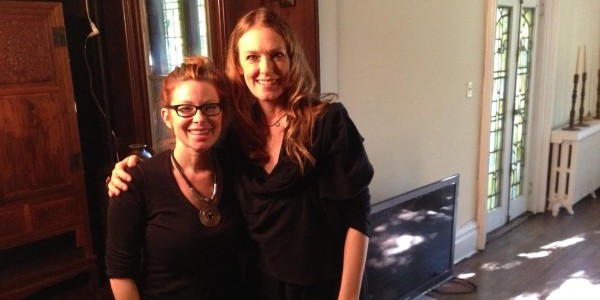
Here is a link to an article that focuses on female filmmakers, and their average score by critics. Then check out their box office average (to the far right). It’s damn good. As Reese Witherspoon said at the Glamour Women of the Year Awards recently, “Films with women at the center are not a public-service project, they are a big-time, bottom-line-enhancing, money-making commodity.” I’ve learned that women are coming together to support one another in droves. There is a revolution going on in the business. Women are simply not going to accept the bias any longer. They are talented, they are willing to work their asses off, and they are determined. They are going to make their art and sell it, one way or another.
HH: How will these interviews fit together in the final documentary? Will it be different segments, or will all the interviews be interspersed? Will we see clips of the directors’ films?
CM: I hope to weave in with these interviews how women have been directing film since the invention of the camera, but I also want to make sure that the audience has a person to follow through the film who they can relate to, so I will be acting as that “every person” to some degree. I think I’m a pretty relatable gal. Not too famous, you know? There will be some clips for sure, so people can get exposed to the beauty of what these women create and I’d love to weave in some animation, too, because these women are all works of art in and of themselves.
HH: Can you talk a little about how being a woman affects you, personally? How do you feel limited? Just as these women are telling stories with their films, you’re telling one with your film. What does this documentary tell us about you as a woman, as a director?
CM: That is such a huge question. I can say that I have always cared about the journey of a woman as I was pretty much raised by a single mom. My dad was very absent before he took off for good. As I got older and learned about the obstacles my mother faced, it really struck me how alone she felt in the world, as a woman. And oddly enough, I’ve felt that same sense of isolation. Loneliness has really followed me throughout my life. It’s a big motivator behind all the work I do, whether I’m acting, or making a film, or writing a book.
HH: Ultimately, what do you hope audiences learn from this project?
CM: I want women of all ages, races, colors, and creeds to watch this film and learn that there are women just like them out there telling stories. I want them to know they are cared about. I want them to walk away with the feeling that if they want to tell stories then they can, because here are all these other women who have done it and are doing it. That would be a great success to me. And if some guys watch it and feel like maybe they had a little bias and now they are going to drop that bias, then I’d say “hallelujah” and die happy.
You can find out more about Seeing is Believing at the official Facebook page, facebook.com/womendirectors, and at McClain’sofficial company website, devilinthemachineproductions.com. Follow McClain on Twitter at @CadyMcClain.
Does content like this matter to you?
Become a Member and support film journalism. Unlock access to all of Film Inquiry`s great articles. Join a community of like-minded readers who are passionate about cinema - get access to our private members Network, give back to independent filmmakers, and more.













